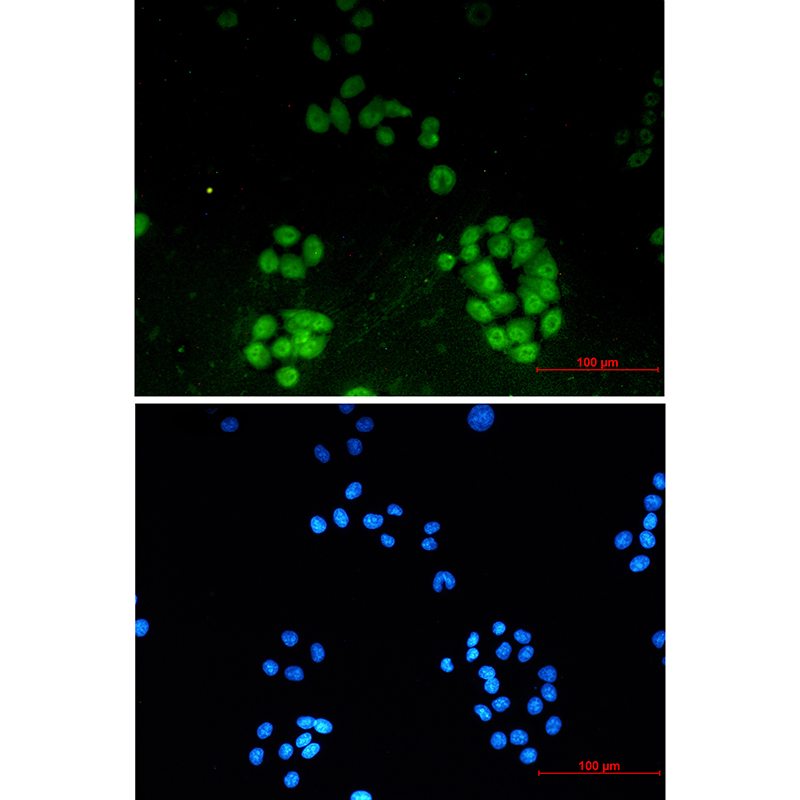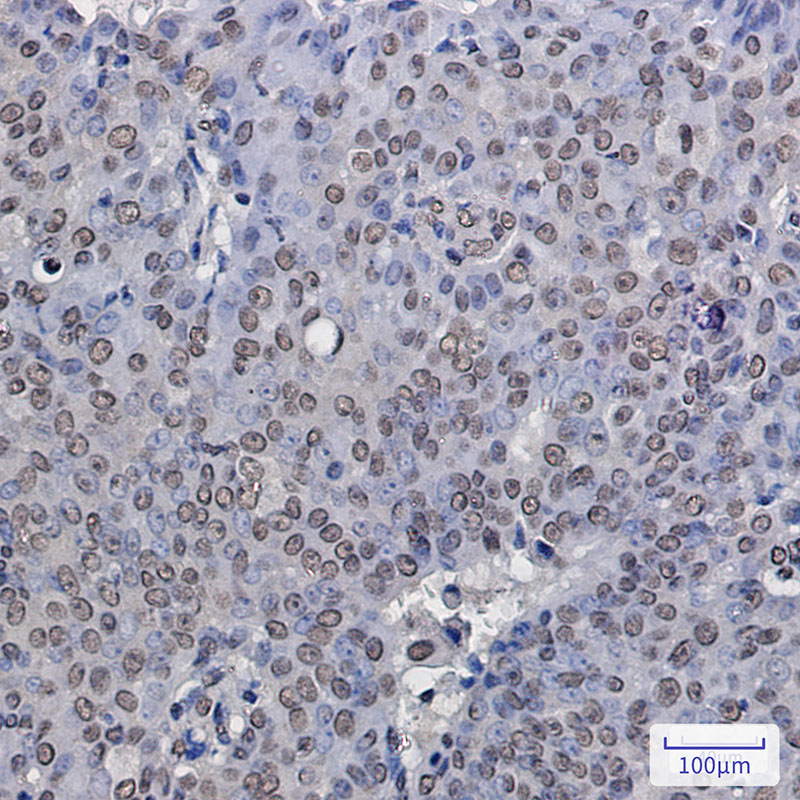


| WB | 咨询技术 | Human,Mouse,Rat |
| IF | 咨询技术 | Human,Mouse,Rat |
| IHC | 1/50-1/100 | Human,Mouse,Rat |
| ICC | 1/50-1/200 | Human,Mouse,Rat |
| FCM | 咨询技术 | Human,Mouse,Rat |
| Elisa | 咨询技术 | Human,Mouse,Rat |
| Aliases | DER12; ei-type; HNP36; Nucleoside transporter; SLC29A2 |
| Entrez GeneID | 3177 |
| WB Predicted band size | Calculated MW: 50 kDa; Observed MW: 60 kDa |
| Host/Isotype | Rabbit IgG |
| Antibody Type | Primary antibody |
| Storage | Store at 4°C short term. Aliquot and store at -20°C long term. Avoid freeze/thaw cycles. |
| Species Reactivity | Human |
| Immunogen | A synthetic peptide of human ENT2 |
| Formulation | Purified antibody in TBS with 0.05% sodium azide,0.05%BSA and 50% glycerol. |
+ +
以下是关于ENT2抗体的3篇参考文献示例(注:以下为模拟内容,实际文献需通过学术数据库检索确认):
---
1. **文献名称**:*"Selective targeting of ENT2 in cancer cells: Role of a monoclonal antibody in nucleoside transport inhibition"*
**作者**:Zhang L, et al.
**摘要**:研究开发了一种针对ENT2的单克隆抗体,证实其可特异性抑制癌细胞对核苷类似物的摄取,为靶向化疗耐药性提供了潜在策略。
2. **文献名称**:*"Immunohistochemical localization of ENT2 in human tissues: Implications for physiological nucleoside distribution"*
**作者**:Thompson R, et al.
**摘要**:利用ENT2抗体进行免疫组化分析,揭示了该转运蛋白在心脏、骨骼肌和肾脏中的高表达,提示其在维持组织核苷平衡中的关键作用。
3. **文献名称**:*"Validation of ENT2 antibody specificity in knockout mouse models: Implications for transporter studies"*
**作者**:Kim H, et al.
**摘要**:通过ENT2基因敲除小鼠模型验证抗体特异性,证明所选抗体无交叉反应性,为后续ENT2功能研究提供了可靠工具。
---
**提示**:实际文献需查阅PubMed、Web of Science等平台,关键词可结合“ENT2 antibody validation”“SLC29A2 antibody application”等拓展搜索。
ENT2 antibody targets the Equilibrative Nucleoside Transporter 2 (ENT2), a protein encoded by the *SLC29A2* gene. As part of the SLC29 family, ENT2 facilitates bidirectional transport of nucleosides and nucleoside analogs across cell membranes, playing a critical role in cellular nucleoside homeostasis and the uptake of therapeutic drugs like anticancer and antiviral agents. Unlike ENT1. ENT2 exhibits broader substrate specificity, including the ability to transport nucleobases (e.g., adenine) in addition to nucleosides. It is ubiquitously expressed but enriched in tissues such as skeletal muscle, kidney, and brain.
ENT2’s function is linked to physiological processes like DNA/RNA synthesis, energy metabolism, and cell signaling. Dysregulation of ENT2 has been implicated in pathological conditions, including cancer (e.g., altered drug sensitivity), neurological disorders, and inflammatory diseases. ENT2 antibodies are essential tools for studying its expression, localization, and regulatory mechanisms. They are widely used in techniques such as Western blotting, immunohistochemistry, and flow cytometry to investigate ENT2’s role in disease progression, drug transport efficiency, and potential as a therapeutic target. Research utilizing ENT2 antibodies has contributed to understanding its structure-function relationships and interactions with pharmacological agents, aiding the development of strategies to modulate nucleoside-related therapies.
×